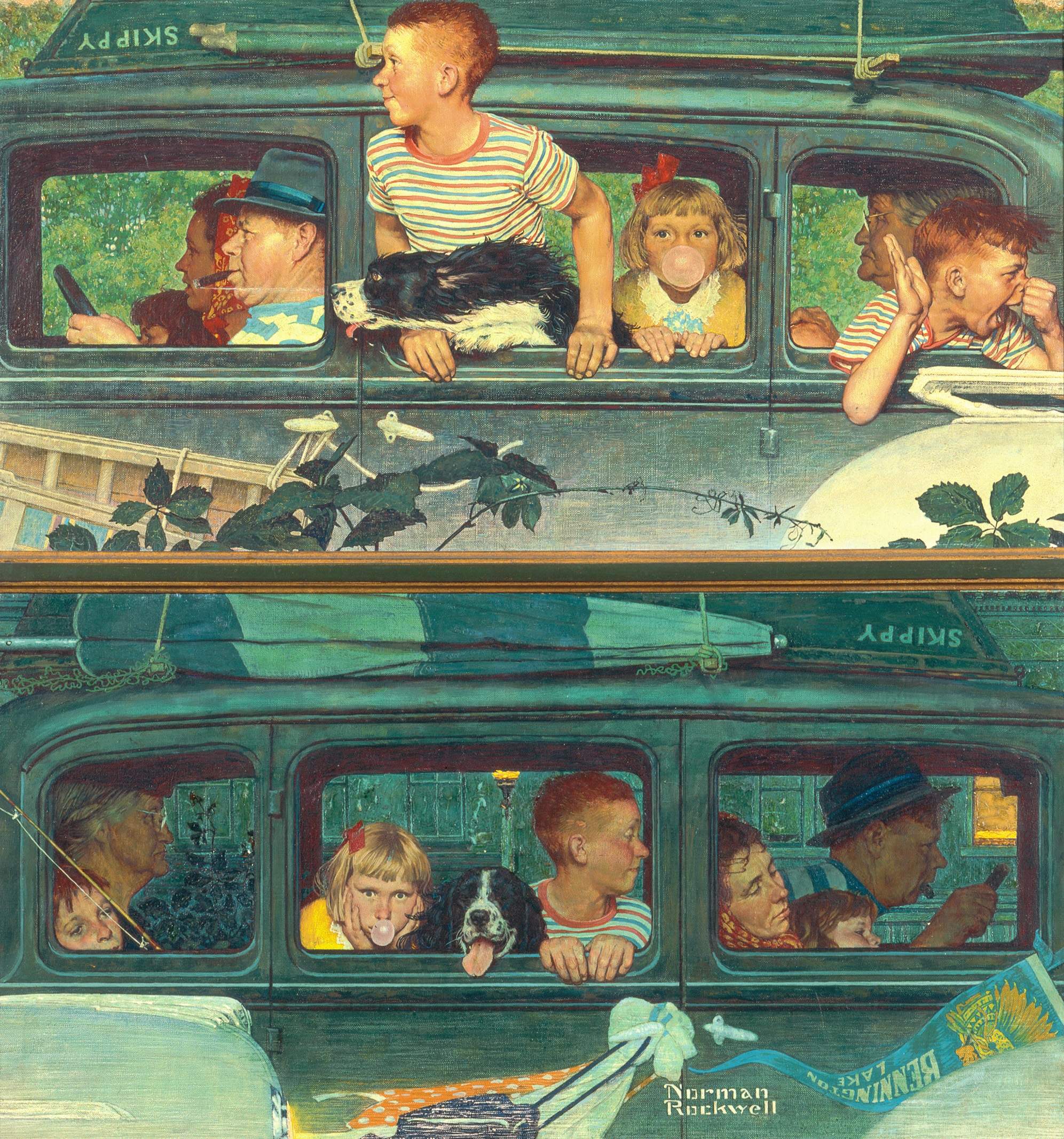GOING AND COMING (ELL)
Tell short stories inspired by Rockwell’s work.
This painting was done for “The Saturday Evening Post” and depicts a family before and after their summer vacation. Rockwell’s Post covers were intended to present a story that was easily “read” and understood by viewers. In this painting he uses two images within one picture to provide more detail and create a continuum of time. We see the “before” and the “after” of the imagined event, a family ‘s summer outing by the lake. The illustration is packed with clues to help viewers unravel the story line.
GOALS
- Notice and describe details.
- Tell a short story including a beginning, middle and end.
MATERIALS
- A printed or digital copy of “Going and Coming”.
- Writing paper
- Drawing materials and drawing paper

Going and Coming, Norman Rockwell. 1947.
©1947 SEPS: Licensed by Curtis Publishing, Indianapolis, IN
[One line activity for teaser: What happened on this family’s trip?]
ACTIVITY
Observe
- Look at the painting together. First challenge students to notice clues about where the family might be going. Ask:
- What are they taking on their trip?
- Where do you think they are going?
- What do you think they will do on their trip?
- How do you think they feel about their trip? Why?
- Now repeat this with the second image. Ask:
- What do you see now?
- How do you think they feel now? Why?
- What do you think they did on their trip? Why?
Explore
- Have students write a short story about the family’s trip. Let them know that their stories should have a beginning, middle and end. The beginning should include the drive there, the middle should include what happened on the trip and the end should include the drive home.
- To provide scaffolding, you may wish to brainstorm an example story together.
If students are not yet writing have them tell their stories. You might have them work in teams of three; one student can tell the beginning, one student can tell the middle, and one student can tell the end.
EXTENSIONS
Try these activities to go even farther with your explorations.
Create
- Have students act out their stories for one another.
Reflect
- Divide children into small groups and have them discuss the following questions:
- How did the clues in the painting help us write our stories?
- What was fun about that?
- What was hard about that?

